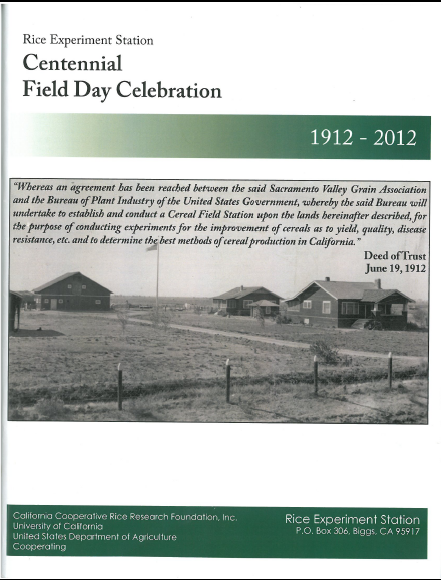Last week I attended the Rice Experiment Station’s Centennial Field Day Celebration.
It was a great celebration!
A celebration of dreams and dedication: our ancestors who 100 years ago didn’t know what might become of rice in California, but they were inspired to begin the search to find out.
A celebration of consistency and cooperation: investing with friends and neighbors to help build a base of information and new varieties of rice for their generation and generations to come.
A celebration of accomplishment and achievement: over 40 varieties of California rice have been released to California’s rice farmers. California rice has a bright future. The highest quality rice varieties – admired and sought across the earth.
I have a debt of gratitude for 100 years of perseverance which has helped to make the Northern Sacramento Valley a great place to grow up, raise a family, and farm in harmony with nature.
There’s still time to dream, counting the ways for you.
There is still time for you, time to vie and muse.
There’s never a wish better than this. We are moving on… 100 years!
Congratulations Rice Experiment Station!
*******
As background, the primary mission of the California Rice Experiment Station (RES) is development of improved rice varieties of all grain and market types to sustain high and stable grain yield and quality with minimum environmental impact for the benefit of California rice growers. From a historical perspective, California rice breeding research from 1912 to 1969 was conducted at RES by a CCRRF/USDA breeder and cooperating University of California (UC) and United States Department of Agriculture – Agricultural Research Service (USDA-ARS) scientists. Only three tall and relatively late maturing rice varieties (short grains Caloro and Colusa and medium grain Calrose) were developed and primarily produced during this first 58 year history of rice in California. A grower-funded comprehensive rice breeding program was initiated at RES in 1969 with an expanded professional research staff that eventually included three plant breeders (Ph.D. level), a plant pathologist (M.S. level), and a director/agronomist. A large accelerated breeding program was built utilizing extensive crossing, cold tolerance screening, statewide yield testing, and winter nursery facilities. Cooperative research, testing, and germplasm were provided by UC and USDA-ARS. The program emphasis in the beginning was on increasing grain yield with retention of typical California short- and medium-grain rice cooking quality. Development of long-grain rice, which is best adapted to tropical climates, for production in the temperate California climate was given priority to allow grower and industry rice sales in the west coast long-grain markets. As progress on grain yield was made, breeding was intensified for improved grain quality, specialty rice, disease resistance, and adaptation. For more information visit: California Rice Research Station



